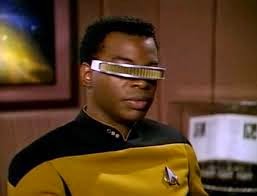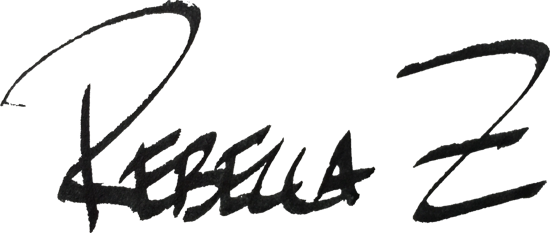
 |
| Ok, so he may not be an artist, but he does SEE differently 😉 |
Here we are on Day 4 of our Drawing challenge already! We are learning to draw, but we are really learning to SEE. How ironic is it that we are learning to see like artists by putting the blinders on? Seeing differently than everyone else is what can help make an artist great. That is why we are diving into a blind contour drawing challenge yet again!
Today our Blind Contour Drawing Challenge subject will be a person. That’s not you whining is it? Contour drawing AGAIN?! I’m not being mean…I promise. Blind Contour drawing deserves reinforcement and this is why…
The best drawing book I know is “Drawing on the Right Side of the Brain” by Betty Edwards. I really love the book and taught a class on it. In that book, after over 40 years of teaching drawing, the author emphasized that whenever they skipped Blind Contour drawing in her courses, the students didn’t make as much overall progress. We want progress, so I am going to trust her experience and we are going to put the blinders on, and try this again with the figure!
Drawing people is something which scares most of us, yet it’s a universally interesting subject for everyone…viewers and artists alike. Probably because the figure has infinitely variable form. I think the figure is intimidating, because everyone knows what a face looks like, whether or not they are an artist. Because everyone is familiar with faces and human form, everyone feels qualified to tell you when something is off in a portrait.
How can we render the figure effectively? Notice that I did not say “perfectly”…I said “effectively”. An effective portrait or figure study is not always perfect. One way, is to create contour drawings. The way we will draw the figure today is not meant to be perfect, but it can be one means to convey an effective artistic impression.
Materials for our Blind Contour Drawing Challenge:
Sketch paper and either a pen or a pencil (I’m not in a bossy mood today, so you get to choose =) I like the quality of the line in pen drawings, so I’m going to use my Micron 05 Sepia (dark brown) pen with archival ink. I’m drawing my image in my Aquabee Super Deluxe sketchbook and I’d suggest you do your series of drawings in a sketchbook. It will provide a great record of this 30 day adventure. =)
You will also need to find a photo of a person in motion or action. A photo with a gesture will work really well for this. I am going to use a Greek folk dancer, because I have wanted to do a drawing of them since I went to Greece. You could use a sports figure, dancer, fashion photo, or a kids magazine. The best thing to do is find a photo you like.
What is a Gesture? A gesture is a pose that implies some kind of movement. These poses often appear frozen in time or caught in action. Once you find your image (you could use mine if you like) proceed to Step 1.
Step 1 of our Blind Contour Drawing Challenge:
Look first and survey the edges of the figure. Decide which area you feel is the most important area in your figure. With the figure, it’s often the head. Make sure this part of your subject will be in a good location on your paper, perhaps ⅓ of the way down from the top edge and ⅓ of the way over . Avoid the dead center of your paper for the focal area. Place your pen where you think the focal area will be. This way, the most important part of our drawing will be well located.
Step 2 of our Blind Contour Drawing Challenge:
Begin moving your eyes and your pen or pencil together to create the edge. Be sure to turn away so you can’t see the paper. Peeking is allowed, but only to replace your pen if it goes astray. Follow those edges slowly with your eyes. Your pen should move with your eyes. This is a slow process, so don’t move your eyes ahead of your pen or pencil. Feel your pencil move.
Notes and hints:
Gaps in the drawing are OK so don’t feel the need to connect every edge. This can allow for some “lost edges” later if you decide to take the drawing a little further.
Talking to yourself is allowed. I find it helps me when I do this. When you talk, there are some words to avoid. If your kids or grandkids are around, try to avoid any expletives, haha, but more importantly avoid naming what you are drawing (like noses or hands for example). Instead, say things like, “Up and then over to the right a little, now down and to the left…etc. “See if it makes it any easier, but be sure to avoid labeling the parts of the body, just tell yourself which direction to move in and then try to make your hand connect with your eye. Remember we are training our brains and our eyes and our hands to all work more closely. If we do this more, they will become a better drawing team.
Here is my blind contour drawing for today. Yours may look like a crazy cousin to my guy, or it may be more restrained. Remember that BLIND contour drawings even at their best, will always look “wonky”. They are not supposed to look right. That’s the beauty of them. It’s not about the drawing, it’s about enjoying the process and training our eyes and hand…
Whatever you end up with will be perfect. It’s the best you can do, so what more can we ask, right? The more you do, the better you will get. Ur already well on your way to becoming better at drawing simply by committing to this drawing challenge. Mad skills, that’s what we want! Thanks for hanging in there and subscribing to this blog.
Have fun and Happy Drawing!!!




Recent Comments